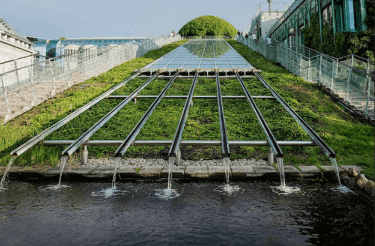Question
a.
True
b.
False
c.
May be True or False
d.
Can't say
Posted under Irrigation Engineering
Interact with the Community - Share Your Thoughts
Uncertain About the Answer? Seek Clarification Here.
Understand the Explanation? Include it Here.
Q. We can find out monthly or fortnightly water requirements of various crops using intervals.
Similar Questions
Explore Relevant Multiple Choice Questions (MCQs)
Q. By how much percentage canal capacity is increased to meet peak demands?
View solution
Q. Suppose the culturable commanded for a distributary is 8000 hectares, and the intensity of irrigation for Kharif season is 60% and that of rabi season is 30%. The average duty at the head of a distributary is 4000 hectares/cumec for Kharif season and for Rabi season it is 1800 hectares/cumec, find out discharge required at the head of the distributary?
View solution
Q. Determine the discharge required at the head of the distributary in a canal where Kharif area to be irrigated is 2400 hectares and Rabi area to be irrigated is 1800 hectares, for fulfilling maximum crop requirement. Assume suitable values for kor depth and kor period.
View solution
Q. Whose theory was the first to provide semi-theoretical analysis of the problem of incipient condition of bed motion?
View solution
Q. Which one is the correct expression for Shield’s entrainment function?
View solution
Q. For the design of non-scouring channels in coarse alluviums, the shield’s entrainment function should be ____________
View solution
Q. Strickler’s formula is only applicable to the flexible boundary channels.
View solution
Q. What is the minimum size of the bed material that will remain at rest in a channel?
View solution
Q. What is the limitation of the Shield’s expression?
View solution
Q. Calculate the Manning’s rugosity coefficient in a coarse alluvium gravel with D-75 size of 5 cm.
View solution
Q. The manning’s coefficient for a lined trapezoidal channel with a bed slope of 1 in 4000 is 0.014 and it will be 0.028 if the channel is unlined. The area in the case of the lined section is 19.04 m² and for the unlined section is 29.09 m². What percentage of earthwork is saved in a lined section relative to an unlined section, when a hydraulically efficient section is used in both the cases?
View solution
Q. Calculate the critical tractive stress if the median diameter of the sand bed is 1.0 mm.
View solution
Q. Calculate the ratio of the tractive critical stress to the average shear stress if the water flows at a depth of 0.8 m in a wide stream having a bed slope of 1 in 3000. The median diameter of the sand bed is 2 mm.
View solution
Q. Determine the shear stress required to move the single grain on the side slopes, if the critical shear stress required moving the similar grain on the horizontal bed is 2.91 N/m². Consider the angle of the side slope with the horizontal as 30° and the angle of repose of soil as 37°.
View solution
Q. The shear stress required to move grain on the side slopes is less than the shear stress required to move the grain on the canal bed.
View solution
Q. Design of alluvial channels in India is based on Kennedy and Lacey theories.
View solution
Q. On what condition does the resistance equations of Chezy’s formula and manning’s formula are applicable?
View solution
Q. What is the problem in India for artificial channels?
View solution
Q.
The velocity of flow in a channel should not more or less, but instead it should be adequate.
View solution
Q. What is the effect of scouring in channels?
View solution
Recommended Subjects
Are you eager to expand your knowledge beyond Irrigation Engineering? We've handpicked a range of related categories that you might find intriguing.
Click on the categories below to discover a wealth of MCQs and enrich your understanding of various subjects. Happy exploring!








